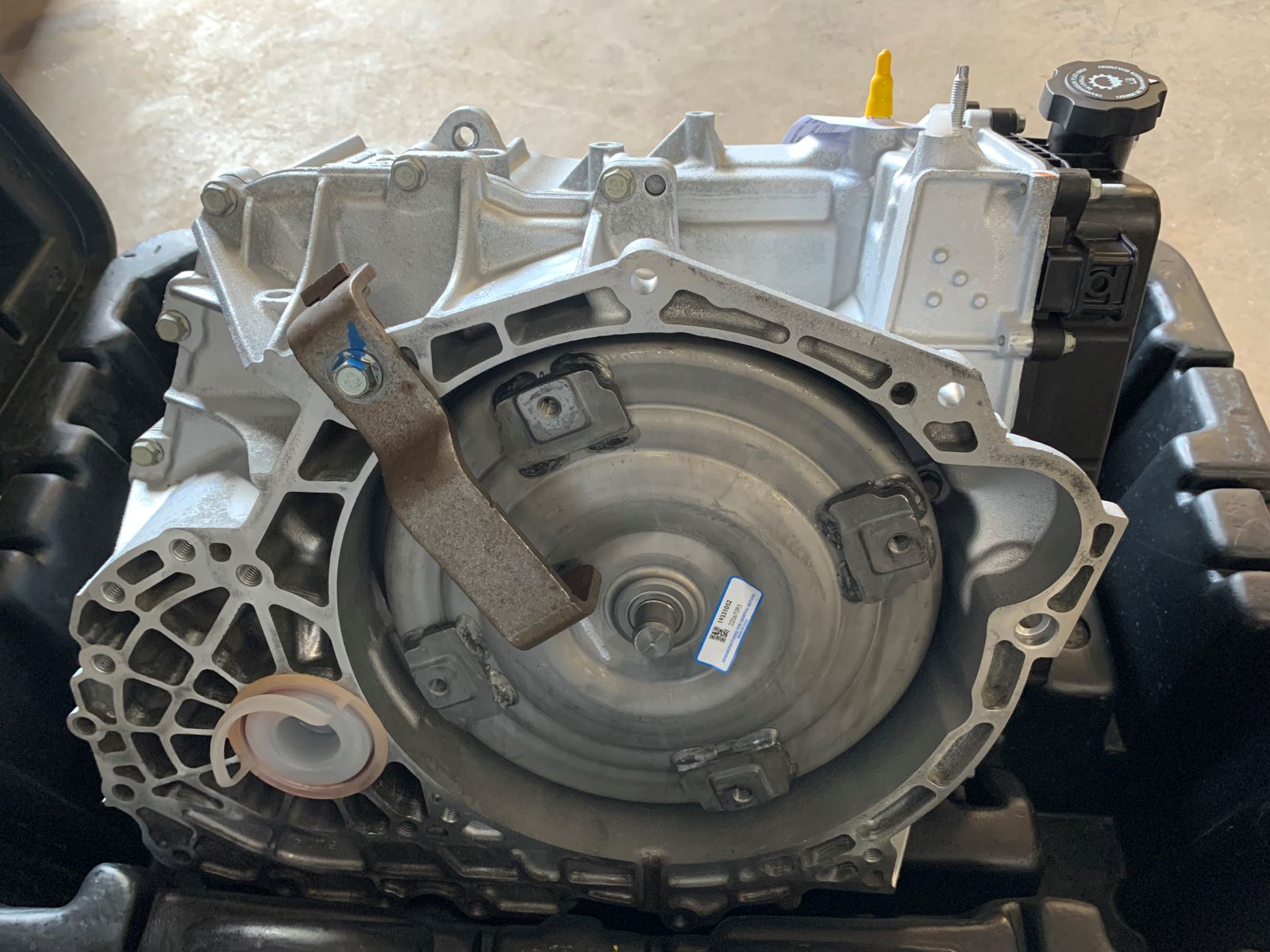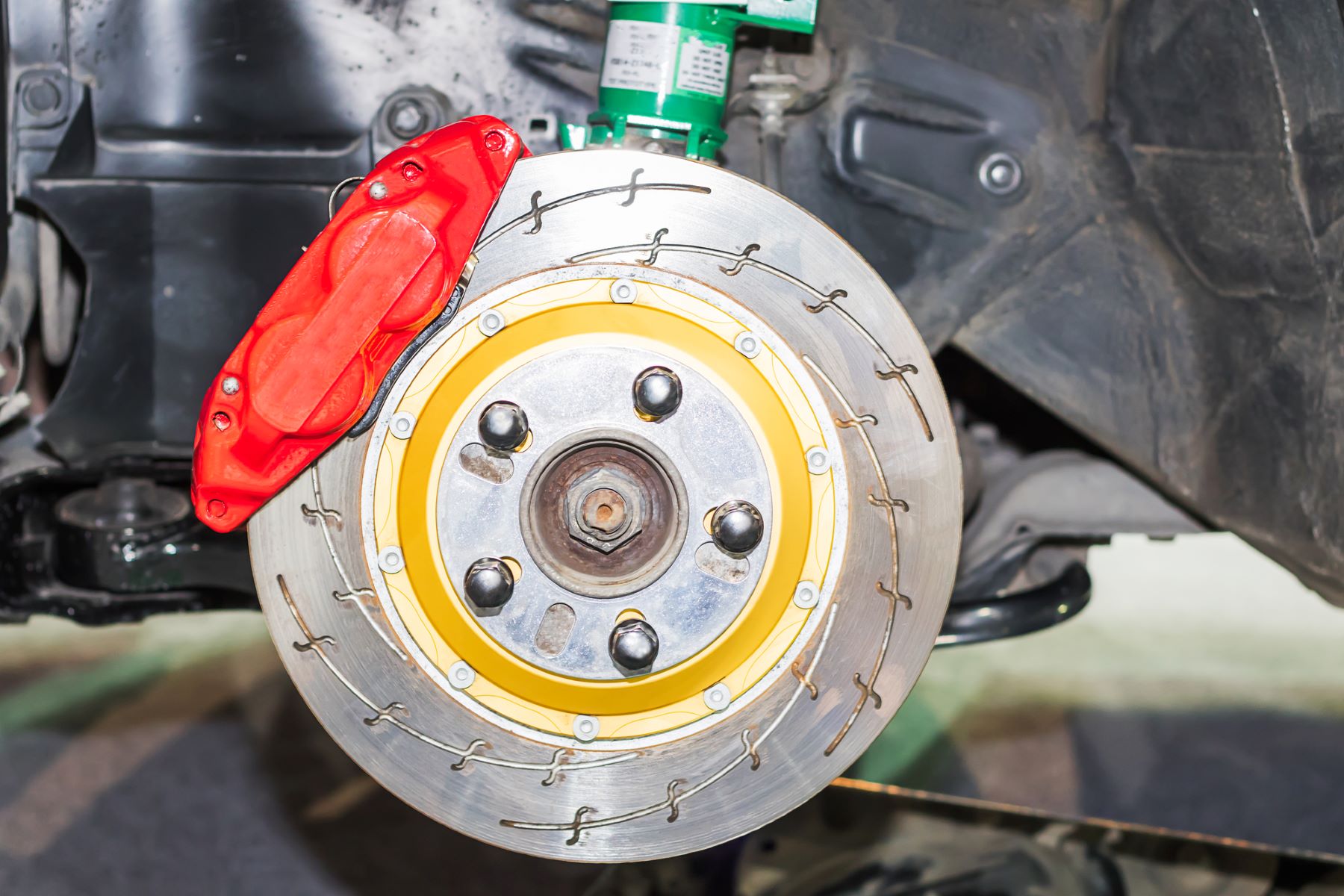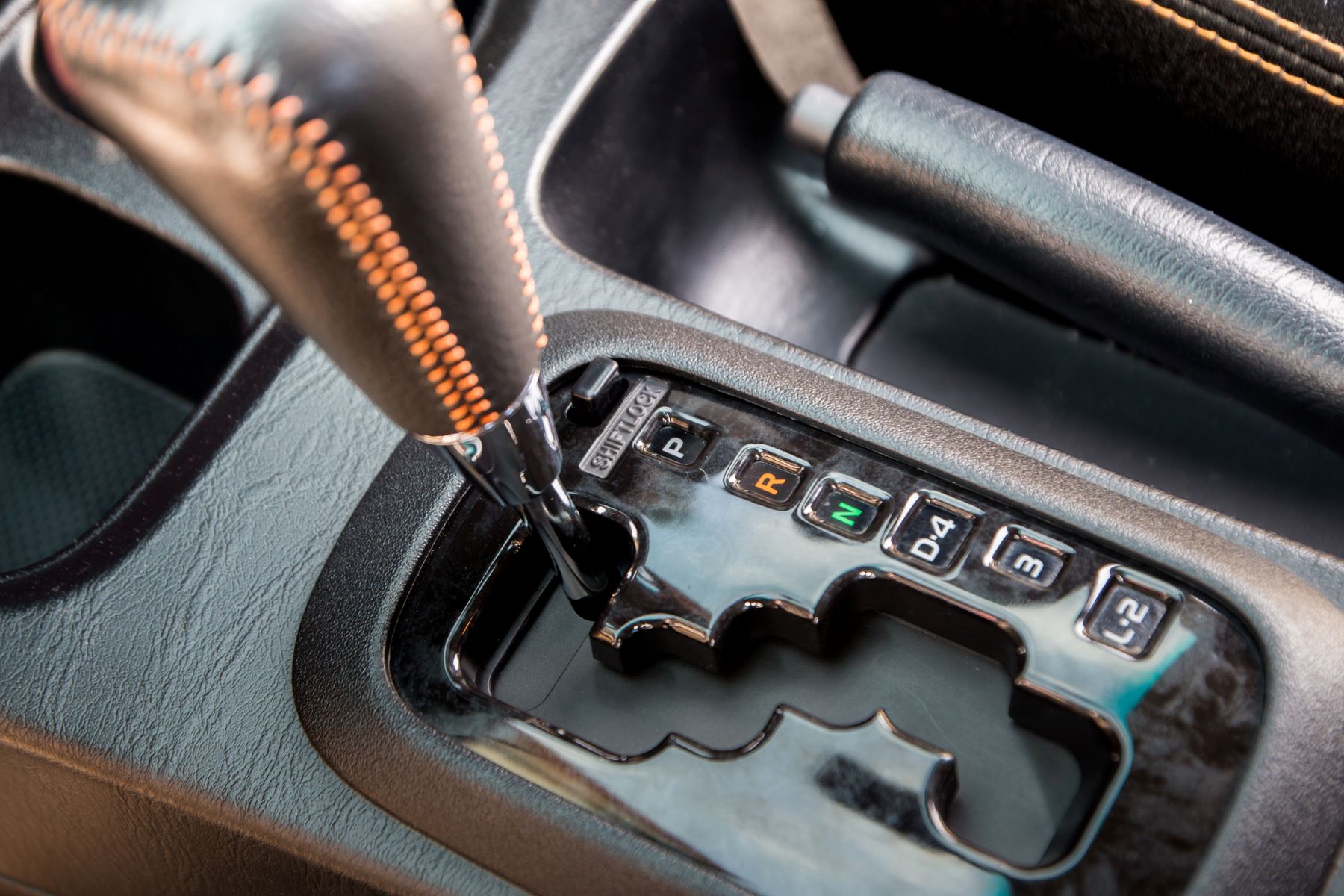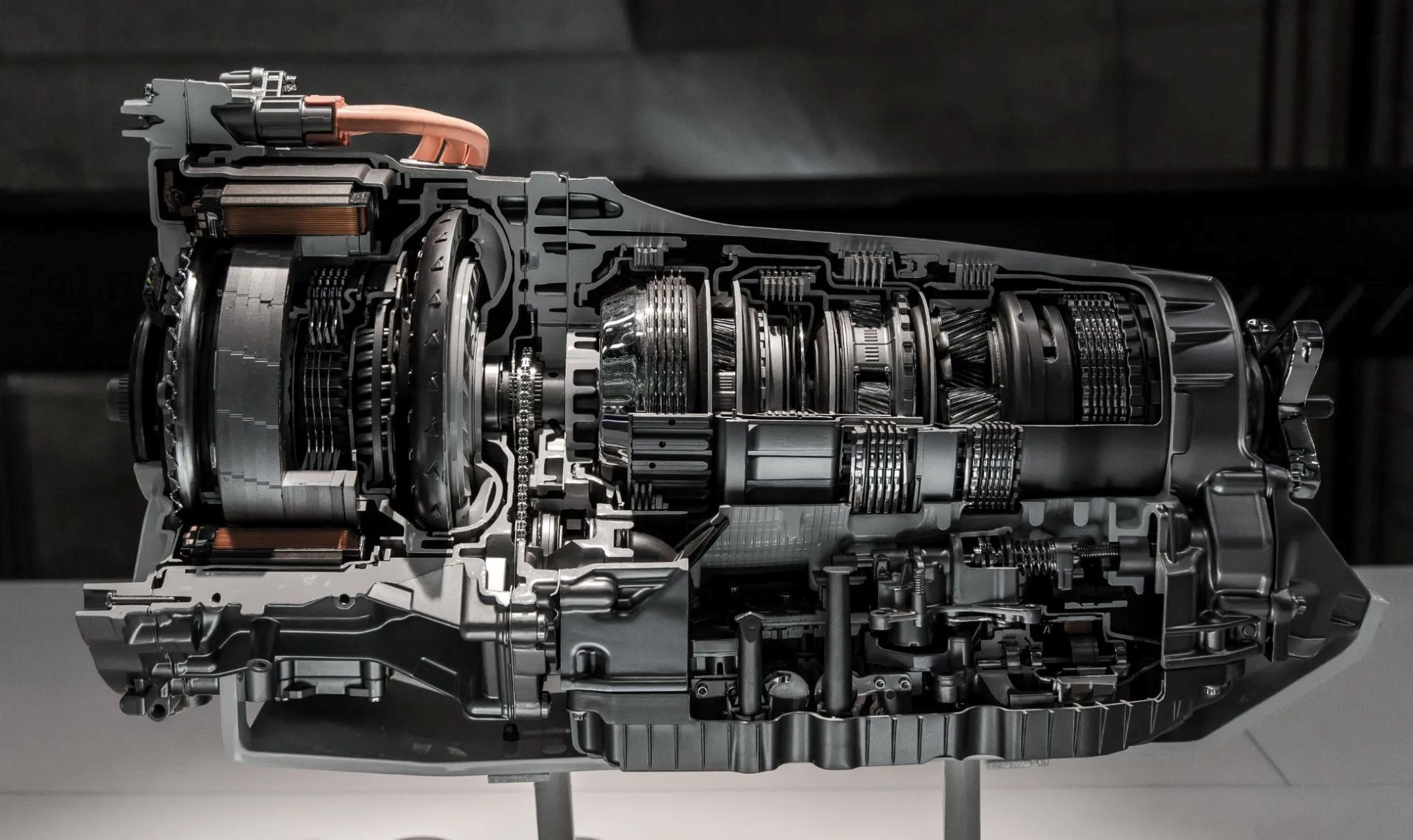Home>Automotive>5 Clear Signs Your Transmission Is Slipping


Automotive
5 Clear Signs Your Transmission Is Slipping
Published: January 25, 2024
Experiencing slipping transmission? Learn about the top 5 signs to watch out for in your automotive vehicle. Don't ignore these warning signals!
(Many of the links in this article redirect to a specific reviewed product. Your purchase of these products through affiliate links helps to generate commission for Regretless.com, at no extra cost. Learn more)
Table of Contents
Introduction
Your vehicle's transmission is a complex and vital component that ensures the smooth operation of your car. It's responsible for transferring power from the engine to the wheels, allowing you to accelerate, decelerate, and maintain a consistent speed. However, when your transmission starts to exhibit signs of trouble, it can lead to a range of issues that affect your driving experience and, if left unaddressed, may result in costly repairs.
Understanding the warning signs of a slipping transmission is crucial for every car owner. By recognizing these indicators early on, you can take proactive measures to address the underlying problems, potentially saving yourself from more extensive damage and expenses down the road.
In this comprehensive guide, we will explore five clear signs that your transmission may be slipping. From delayed shifting to unusual noises and fluid leaks, each of these warning signals warrants attention and prompt action. By familiarizing yourself with these signs, you'll be better equipped to identify potential transmission issues and seek professional assistance to keep your vehicle running smoothly.
Let's delve into each of these signs to gain a deeper understanding of what they entail and how they can impact the performance of your vehicle. Whether you're a seasoned driver or a new car owner, this knowledge will empower you to stay vigilant and proactive when it comes to maintaining the health of your transmission.
Sign 1: Delayed or Rough Shifting
One of the most noticeable signs of a slipping transmission is delayed or rough shifting. When you drive, you expect your vehicle to smoothly transition between gears, allowing for seamless acceleration and deceleration. However, if you begin to experience a delay in gear engagement or notice that the gear shifts feel unusually rough or jerky, it could indicate underlying transmission issues.
In a healthy transmission, gear changes should occur almost imperceptibly, with the engine and transmission working in harmony to deliver consistent power to the wheels. However, when the transmission is slipping, the process becomes disrupted, leading to hesitations between gear changes or a jarring sensation as the vehicle shifts.
When you press the accelerator, a delayed response in acceleration, despite the engine revving, can be a clear indication of a slipping transmission. Additionally, you may notice a hesitation or resistance when shifting from park to drive or reverse, further highlighting the presence of transmission issues.
The rough shifting associated with a slipping transmission can manifest as a jolt or abrupt lurching motion when changing gears. This can be particularly noticeable when accelerating from a stop or when the vehicle shifts between lower and higher gears at varying speeds. The abrupt nature of these gear changes not only compromises driving comfort but also points to potential internal transmission problems.
It's important to address delayed or rough shifting promptly, as neglecting these symptoms can exacerbate the underlying transmission issues, leading to more severe and costly repairs. By recognizing these signs early on, you can seek professional diagnosis and intervention to mitigate further damage and ensure the continued reliability of your vehicle.
Understanding the impact of delayed or rough shifting on your driving experience underscores the significance of proactive transmission maintenance. By staying attuned to these warning signals, you can take the necessary steps to preserve the integrity of your transmission and safeguard the overall performance of your vehicle.
Sign 2: Unusual Noises
Unusual noises emanating from your vehicle can serve as a clear indicator of potential transmission issues. As a driver, being attuned to the normal sounds of your car allows you to discern when something is amiss, particularly when it comes to the transmission. When your transmission is slipping, it may produce distinct sounds that deviate from the typical hum of the engine and the smooth operation of the vehicle.
One of the most common auditory cues of a slipping transmission is a whining or humming noise that becomes more pronounced as you accelerate. This high-pitched sound often signifies a lack of proper lubrication or the presence of worn-out components within the transmission. It can indicate low or contaminated transmission fluid, leading to increased friction and strain on the internal parts of the transmission. Ignoring this noise can result in further damage, potentially leading to a complete transmission failure.
Another concerning noise associated with a slipping transmission is a clunking or thudding sound when shifting gears. This abrupt and unsettling noise can occur during gear changes, especially when transitioning from park to drive or reverse. The presence of such sounds indicates potential issues with the transmission's internal mechanisms, such as worn-out gear teeth or damaged synchronizers. Addressing these noises promptly is crucial to prevent further deterioration of the transmission's components and ensure the continued functionality of your vehicle.
In some instances, a slipping transmission may also produce a grinding or whirring noise, particularly when attempting to shift gears. This harsh grinding sound often points to significant transmission problems, such as damaged gear teeth or a malfunctioning clutch. Ignoring these noises can lead to severe transmission damage and compromise the safety and reliability of your vehicle.
By paying attention to these unusual noises and promptly seeking professional evaluation, you can mitigate the risk of extensive transmission damage and costly repairs. Regular maintenance, including fluid checks and replacements, can help prevent these noises from developing and ensure the smooth operation of your transmission. Understanding the significance of these auditory warning signals empowers you to take proactive measures in preserving the health and functionality of your vehicle's transmission.
Sign 3: Fluid Leaks
Fluid leaks are a critical indicator of potential transmission issues that demand immediate attention. Your vehicle's transmission relies on a precise and consistent supply of transmission fluid to lubricate internal components, facilitate gear shifts, and dissipate heat generated during operation. When you notice fluid pooling beneath your car or detect signs of leakage on the transmission housing, it signals a potential compromise in the integrity of the system.
Transmission fluid is typically reddish in color and possesses a distinct, slightly sweet odor. If you observe a reddish-brown fluid accumulating beneath your vehicle, it is likely transmission fluid. The presence of such leaks can stem from various sources, including damaged seals, gaskets, or transmission lines, as well as a cracked transmission pan. Identifying and addressing these leaks promptly is crucial to prevent a decline in transmission performance and a potential breakdown.
In addition to the visual cues of fluid leaks, you may also encounter warning signs within the vehicle itself. A low transmission fluid level can manifest as gear slippage, erratic shifting, or a noticeable increase in transmission operating temperature. These symptoms underscore the detrimental effects of fluid leaks on the transmission's functionality and overall health.
It is important to note that driving with low transmission fluid levels can lead to extensive damage to the transmission's internal components, ultimately resulting in a complete system failure. Therefore, regular inspection of the transmission fluid level and condition is essential for early detection of leaks and preemptive maintenance.
Promptly addressing fluid leaks involves identifying the source of the leakage and taking corrective measures, such as replacing damaged seals, gaskets, or transmission lines, and ensuring the transmission fluid is replenished to the appropriate level. By proactively addressing fluid leaks, you can safeguard the integrity of your transmission, prevent costly repairs, and maintain the smooth and reliable operation of your vehicle.
Understanding the significance of fluid leaks as a warning sign of a slipping transmission empowers you to prioritize proactive maintenance and promptly address any instances of leakage. By staying vigilant and responsive to these indicators, you can uphold the optimal performance and longevity of your vehicle's transmission, ensuring a safe and enjoyable driving experience.
Sign 4: Vehicle Surging
Vehicle surging, also known as transmission slipping, is a concerning sign that warrants immediate attention from car owners. This phenomenon is characterized by an unexpected and irregular increase in engine RPM (revolutions per minute) without a corresponding acceleration of the vehicle. In essence, the car may exhibit a sudden surge of power followed by a temporary loss of momentum, creating a jerking or lurching sensation that disrupts the smooth operation of the vehicle.
When a transmission is slipping, it struggles to maintain a consistent power delivery to the wheels, resulting in sporadic surges in engine RPM. This erratic behavior can occur during acceleration, deceleration, or when maintaining a steady speed, compromising the overall driving experience and potentially posing safety risks.
Vehicle surging can manifest in various driving scenarios, such as when accelerating from a stop, climbing uphill, or cruising at highway speeds. These sudden bursts of power followed by momentary loss of traction can be disconcerting for drivers and passengers, highlighting the urgency of addressing potential transmission issues.
The underlying causes of vehicle surging often stem from internal transmission malfunctions, such as worn-out clutch plates, damaged torque converters, or inadequate transmission fluid levels. Additionally, electronic control system glitches or sensor irregularities can contribute to this disruptive behavior, further emphasizing the need for thorough diagnostic assessment by qualified automotive technicians.
Addressing vehicle surging promptly is paramount to prevent further transmission damage and ensure the safety and reliability of your vehicle. By seeking professional evaluation and intervention, you can identify the root cause of the surging phenomenon and implement targeted repairs or adjustments to restore the optimal functionality of your transmission.
Moreover, regular transmission maintenance, including fluid checks and replacements, can mitigate the risk of surging and prolong the longevity of your vehicle's transmission. By staying attentive to the signs of vehicle surging and taking proactive measures to address them, you can uphold the performance and safety of your vehicle, fostering a confident and enjoyable driving experience for years to come.
Read more: 5 Signs That A Jinn Is Haunting Your House
Sign 5: RPM Fluctuations
RPM fluctuations, also known as erratic engine revving, serve as a definitive indicator of potential transmission issues that demand immediate attention from vehicle owners. The RPM, or revolutions per minute, reflects the speed at which the engine rotates, directly influencing the power output and performance of the vehicle. When RPM fluctuations occur, the engine speed oscillates unpredictably, leading to disruptive driving experiences and signaling underlying transmission irregularities.
An observable manifestation of RPM fluctuations is when the engine revs unexpectedly without corresponding acceleration or driver input. This erratic behavior can occur during gear shifts, acceleration, or when maintaining a steady speed, creating a disconcerting and potentially unsafe driving environment. The engine may surge and drop in RPM abruptly, causing a noticeable jolting or lurching sensation that compromises driving comfort and overall vehicle performance.
The root causes of RPM fluctuations often stem from internal transmission anomalies, including worn-out clutch components, damaged torque converters, or inadequate transmission fluid levels. Furthermore, electronic control system malfunctions or sensor irregularities can contribute to the erratic engine behavior, necessitating thorough diagnostic evaluation by qualified automotive technicians.
Addressing RPM fluctuations promptly is crucial to prevent further transmission damage and ensure the safety and reliability of the vehicle. By seeking professional assessment and intervention, drivers can identify the underlying issues causing RPM fluctuations and implement targeted repairs or adjustments to restore the optimal functionality of the transmission.
Regular transmission maintenance, including fluid checks and replacements, plays a pivotal role in mitigating the risk of RPM fluctuations and prolonging the longevity of the vehicle's transmission. By remaining vigilant to the signs of RPM fluctuations and taking proactive measures to address them, vehicle owners can uphold the performance and safety of their vehicles, fostering a confident and enjoyable driving experience for years to come.
Understanding the significance of RPM fluctuations as a warning sign of a slipping transmission empowers vehicle owners to prioritize proactive maintenance and promptly address any instances of erratic engine behavior. By staying attentive to these indicators, drivers can uphold the optimal performance and longevity of their vehicle's transmission, ensuring a safe and enjoyable driving experience.
Conclusion
In conclusion, being attentive to the warning signs of a slipping transmission is paramount for every vehicle owner. The five clear indicators discussed in this guide – delayed or rough shifting, unusual noises, fluid leaks, vehicle surging, and RPM fluctuations – serve as crucial cues that necessitate proactive attention and timely intervention. By recognizing these signs early on, drivers can take proactive measures to address potential transmission issues, ultimately safeguarding the overall performance and longevity of their vehicles.
Understanding the impact of delayed or rough shifting on the driving experience emphasizes the importance of prompt diagnosis and intervention to mitigate further damage. Similarly, being attuned to unusual noises emanating from the vehicle allows drivers to identify potential transmission irregularities and seek professional evaluation to prevent extensive damage. Moreover, vigilance in detecting fluid leaks and promptly addressing them is essential for preserving the integrity of the transmission system and preventing costly repairs.
The disruptive phenomena of vehicle surging and RPM fluctuations underscore the urgency of seeking professional assessment and targeted repairs to restore the optimal functionality of the transmission. By addressing these warning signs promptly, drivers can uphold the safety, reliability, and performance of their vehicles, fostering a confident and enjoyable driving experience for years to come.
Furthermore, regular transmission maintenance, including fluid checks and replacements, plays a pivotal role in mitigating the risk of transmission issues and prolonging the longevity of the vehicle's transmission. By prioritizing proactive maintenance and promptly addressing any signs of a slipping transmission, vehicle owners can uphold the optimal performance and functionality of their vehicles, ensuring a safe and enjoyable driving experience.
In essence, the proactive identification and timely resolution of transmission irregularities are essential for preserving the health and longevity of the vehicle's transmission. By staying attuned to these warning signs and taking proactive measures to address them, drivers can uphold the safety, reliability, and overall performance of their vehicles, fostering a confident and enjoyable driving experience for years to come.














